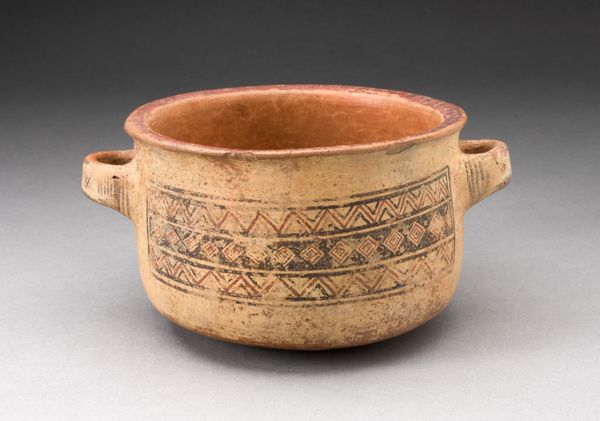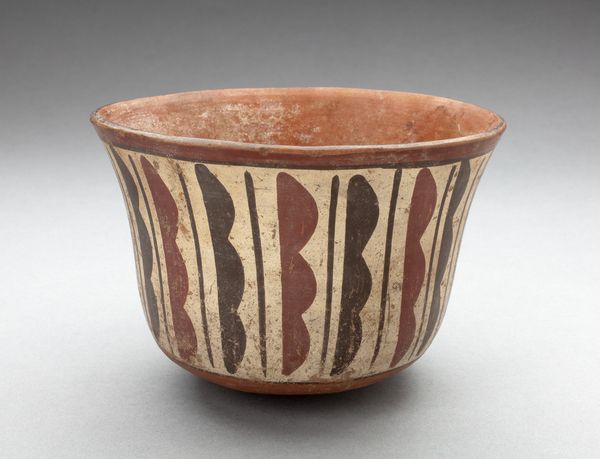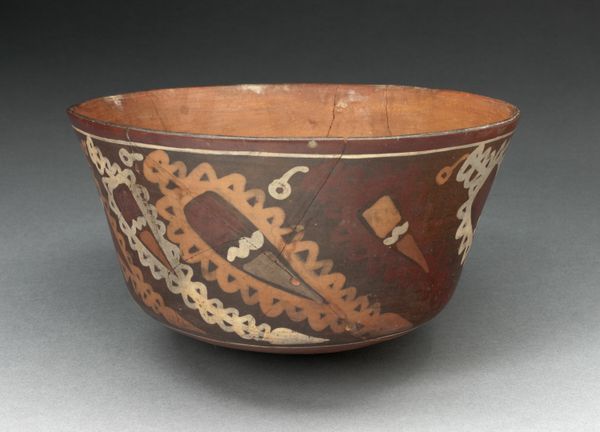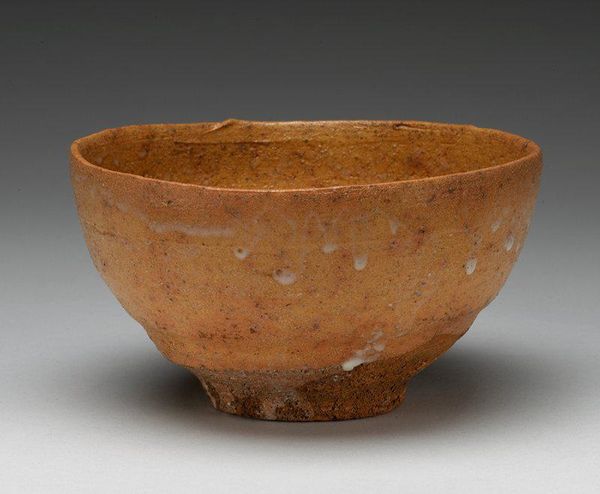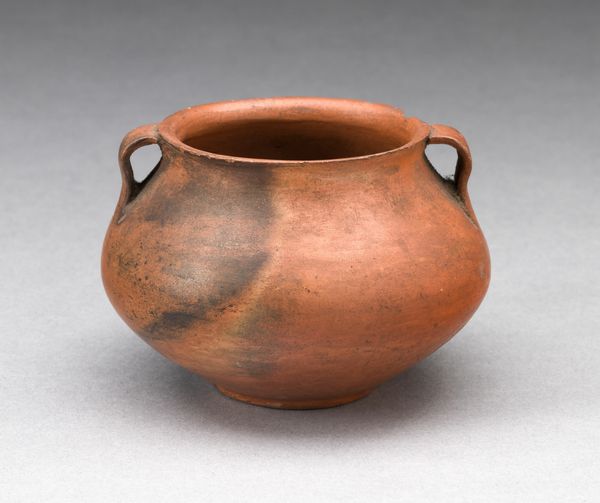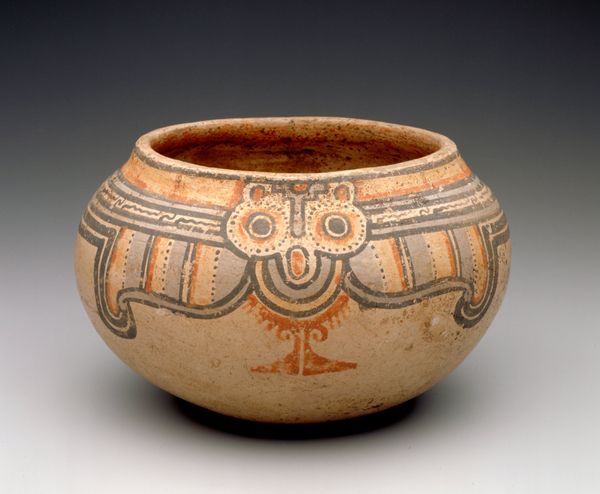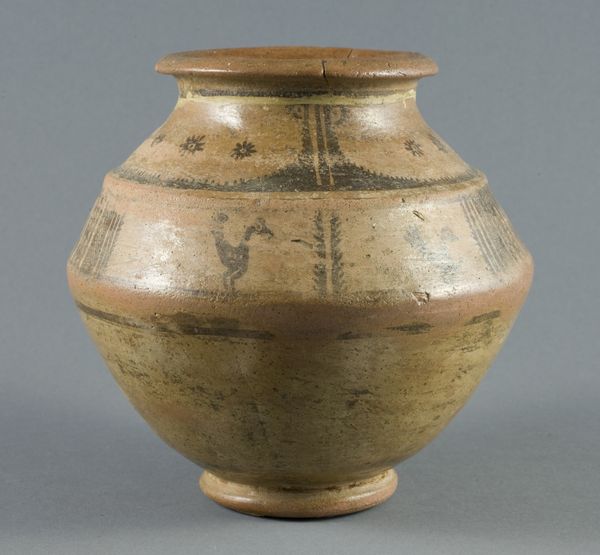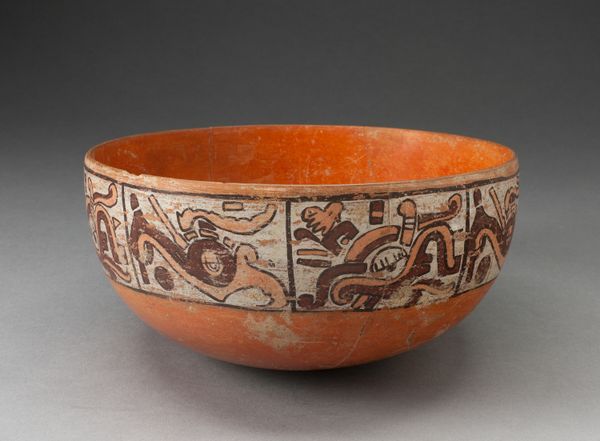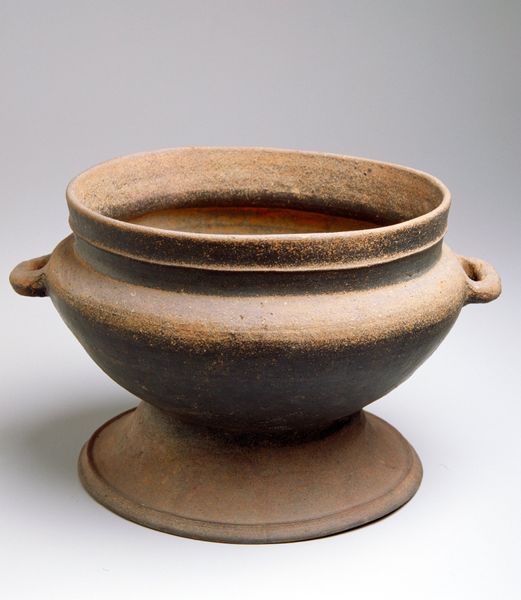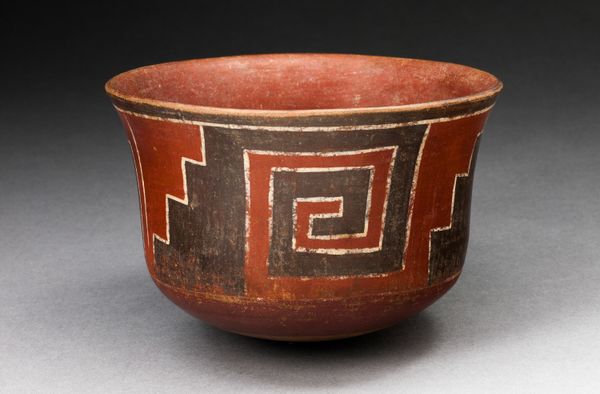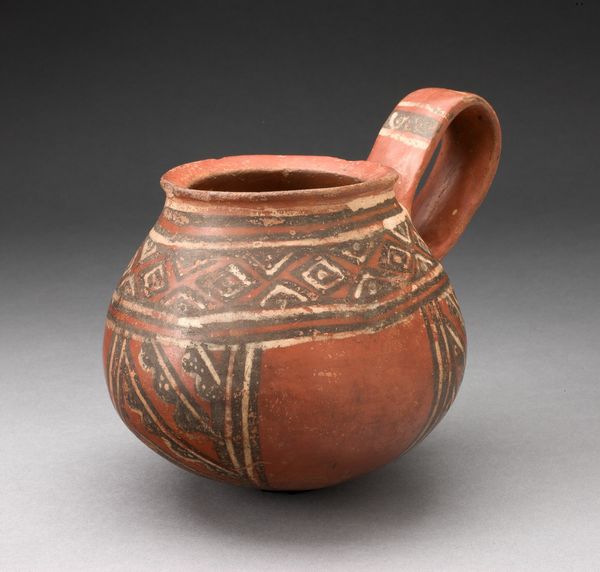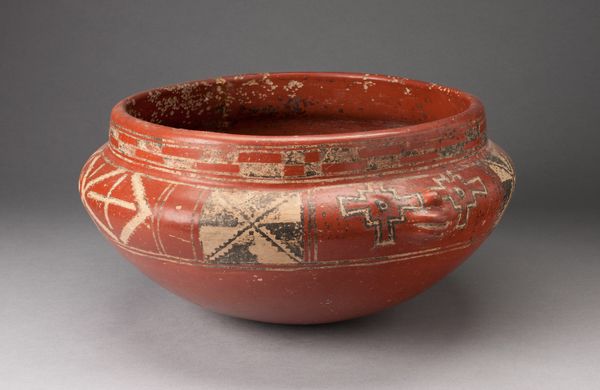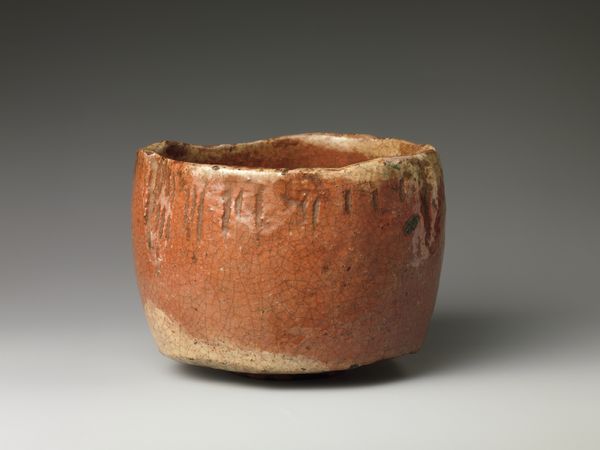
ceramic, earthenware
#
asian-art
#
ceramic
#
abstract
#
earthenware
#
decorative-art
Dimensions: overall: 7.6 x 11.7 cm (3 x 4 5/8 in.)
Copyright: National Gallery of Art: CC0 1.0
Curator: Standing here, we have an exquisite example of a Raku tea bowl dating from the late 19th century. Editor: It's surprisingly humble, isn't it? I mean, I'm immediately drawn to this fiery orange glaze and the playful cracks spiderwebbing across the surface. There's a real sense of… imperfection, like a beloved, well-used object. Curator: Raku ware is all about embracing that imperfection. It's more than just a tea bowl; it’s an aesthetic philosophy deeply entwined with Zen Buddhism and the Japanese tea ceremony. We’re looking at a handcrafted piece, likely earthenware, where each firing results in something unique and unrepeatable. Editor: Thinking about the production, that intensity of color probably comes from the rapid firing and cooling process that's typical of Raku. The stark white decorative elements stand out against it. It must have taken incredible skill and experience to control the process and create something so visually arresting. There's definitely a labor aspect to consider too: both in the physicality of its creation but also, what sort of person was it for? Curator: Precisely. And consider that each bowl is designed to fit perfectly within the hands of the tea master and be held in quite an intimate way. Those abstract shapes, the slightly uneven rim... everything is meant to heighten the tactile and sensory experience of drinking tea, the visual connection. It invites meditation on nature and the fleetingness of time and beauty. The rough quality of the clay itself grounds me and makes me feel like the ceramicist chose to stay true to materials on hand, and its end purpose. Editor: I suppose seeing the traces of its making is what resonates the most, its history; to really bring your eye into all the detail. It's less about pristine craftsmanship and more about celebrating the unpredictable alchemy of fire and earth. The slight deformations that have occured, these surface irregularities; I'd also suggest it offers up some interesting metaphors for consumerism and beauty as an art object... the clay of our past that we now choose to hold in a different light. Curator: That is so true: there's this beauty of age about it as well. Well, it is more than an artifact. Thanks for sharing your insightful impressions! Editor: Thanks! Exploring the bowl and considering the tea master, process, and its material nature made me reflect on the deeper values the artisan invested into their creation.
Comments
No comments
Be the first to comment and join the conversation on the ultimate creative platform.

